The Ultimate Guide to Anthocyanins: Nature’s Vibrant Powerhouse from aiherba.com
Premium Anthocyanin Extract Supplier | GMP-Certified Plant Extract Manufacturer
1. What are Anthocyanins?
Anthocyanins are a class of water-soluble flavonoid pigments responsible for the vibrant red, purple, and blue hues in numerous fruits, vegetables, and flowers (e.g., blueberries, blackberries, red cabbage, purple sweet potatoes). Chemically, they are glycosides derived from anthocyanidins, the core aglycone structure. Their color expression is pH-dependent, shifting from red in acidic conditions to blue in alkaline environments. Beyond aesthetics, these potent plant bioactive compounds are increasingly sought after in functional foods, dietary supplements, natural food colorants, and cosmetic ingredients for their exceptional health-promoting properties.
2. Anthocyanin: Source, Chemical Properties & Identification
-
Primary Sources: Berries (blueberry, bilberry, elderberry, cranberry, raspberry, blackcurrant), cherries, red/purple grapes, red cabbage, purple sweet potato, eggplant skin, black rice, acai.
-
Chemical Nature: Polyphenolic compounds belonging to the flavonoid subclass. Basic structure: Anthocyanidin (aglycone like Cyanidin, Delphinidin, Malvidin, Pelargonidin, Peonidin, Petunidin) bound to one or more sugar moieties (glycosides).
-
Core Chemical Properties:

Anthocyanin Applications -
High solubility in polar solvents (water, methanol, acidic solutions).
-
Susceptible to degradation by light, heat, oxygen, and pH changes.
-
Exhibit strong antioxidant activity via free radical scavenging and metal chelation.
-
-
Key Identifiers:
-
CAS Registry Numbers: Vary by specific anthocyanin (e.g., Cyanidin-3-glucoside: 7084-24-4, Delphinidin-3-glucoside: 6906-38-3). Anthocyanins as a class do not have a single CAS.
-
Molecular Formula (MF): Varies significantly (e.g., Cyanidin-3-glucoside: C₂₁H₂₁O₁₁).
-
Molecular Weight (MW): Varies (e.g., Cyanidin-3-glucoside: 449.4 g/mol).
-
EINECS: Listing is specific to individual compounds; many common anthocyanins are listed (e.g., Cyanidin-3-glucoside: 230-417-0).
-
3. Choosing the Best Anthocyanin Extract: Key Considerations
Selecting a premium anthocyanin extract powder involves scrutinizing several factors crucial for efficacy, safety, and compliance:
-
Key Components & Standardization: Look for extracts standardized to a specific anthocyanin content (e.g., 25%, 36%). High cyanidin-3-glucoside content (common in bilberry/blackcurrant) is often a marker of quality. Ensure identity is confirmed via HPLC-DAD/UV-Vis or HPLC-MS.
-
Health Benefits (Supported by Research):
-
Potent Antioxidant: Neutralizes harmful free radicals, combating oxidative stress linked to chronic diseases.
-
Anti-Inflammatory: Modulates inflammatory pathways (e.g., NF-κB, COX-2 inhibition).
-
Cardiovascular Support: Improves endothelial function, reduces LDL oxidation, may lower blood pressure.
-
Vision Health: Supports retinal function and microcirculation (especially bilberry anthocyanins).
-
Cognitive Function: May protect neurons, improve memory, and reduce neuroinflammation.
-
Metabolic Health: Potential benefits for blood sugar regulation and insulin sensitivity.
-
-
Origin & Purity: Opt for extracts derived from identified botanical sources grown in regions with high standards. GMP-certified manufacturing is non-negotiable. Ensure rigorous testing for contaminants.
-
Usage: Typically incorporated into capsules, tablets, softgels, powders, functional beverages, yogurts, confectionery (as natural colorants), or topical skincare formulations. Dosage depends on standardization and application.
-
Recommended Daily Intake: No universally established RDI. Dosages in clinical studies often range from 50 mg to 500 mg per day of anthocyanins. Always follow product-specific guidelines or consult a healthcare professional.
-
Target Audience: Consumers seeking natural antioxidants, individuals focusing on cardiovascular/cognitive/eye health, manufacturers of functional foods/beverages, cosmetic formulators, dietary supplement brands.
-
Crucial Precautions & Potential Side Effects:
-
Generally Recognized As Safe (GRAS) for food use; safe in typical supplemental doses.
-
Potential mild side effects: Gastrointestinal upset (rare).
-
Important: Consult a doctor before use if pregnant, breastfeeding, taking blood-thinning medications (potential interaction), or have a known allergy to source fruits/flowers.
-
Quality is Paramount: Choose suppliers like aiherba providing full certificates of analysis (CoA) to ensure freedom from heavy metals, pesticides, solvents, and microbial contamination.
-
4. Your Trusted Anthocyanin Partner: Shaanxi Zhonghong Investment Technology Co., Ltd.
Leading Innovation in Plant Bioactives for 28 Years
Shaanxi Zhonghong Investment Technology Co., Ltd. stands as a premier high-tech enterprise integrating R&D, collaborative innovation, precision manufacturing, and global marketing. We specialize in the advanced extraction, isolation, purification, and application development of potent plant-derived compounds, serving the demanding needs of the chemical, materials, and life sciences industries.
-
Core Expertise: Advanced purification of natural plant extracts, specializing in bioactive compounds like anthocyanins. Our portfolio spans:
-
Natural Plant Extracts & Phytochemicals
-
Cosmetic Active Ingredients
-
Nutraceutical & Pharmaceutical Intermediates
-
Natural Food Colorants (including anthocyanins)
-
Dietary Supplement Ingredients
-
Food & Beverage Additives
-
Natural Sweeteners
-
-
Unmatched Scientific Rigor (Research Barrier):
-
Strategic alliances with 5 elite universities via joint laboratories.
-
Proprietary patented technologies (20+) enabling unparalleled purity and yield.
-
Exclusive access to a global unique compound library.
-
-
State-of-the-Art Infrastructure (Equipment Leadership):
-
GMP-certified production lines ensure pharmaceutical-grade quality.
-
Equipped with HPLC (High-Performance Liquid Chromatography), UPLC (Ultra-Performance LC), GC (Gas Chromatography), NMR (Nuclear Magnetic Resonance Spectrometry), and advanced mass spectrometry (MS).
-
Our international-grade detection systems guarantee purity standards exceeding typical industry benchmarks by over 20%.
-
-
Global Reach: Trusted partner delivering customized botanical extract solutions to multinational pharmaceutical companies, research institutions, and leading brands across 80+ countries in Asia, Europe, and the Americas.
5. Product Specification & Quality Assurance (Certificate of Analysis – CoA)
Commitment to Transparency and Safety
| Category | Parameter/Project Name | Specification/Requirement | Test Method |
|---|---|---|---|
| Pesticides | Acephate | ≤ 0.01 mg/kg | GB 23200.113-2018 |
| Chlorpyrifos | ≤ 0.01 mg/kg | GB 23200.113-2018 | |
| Cypermethrin | ≤ 0.5 mg/kg | GB 23200.113-2018 | |
| Dichlorvos | ≤ 0.01 mg/kg | GB 23200.113-2018 | |
| Total Pesticide Residues | Meet relevant regulations | Multi-residue Methods (e.g., LC-MS/MS) | |
| Heavy Metals | Lead (Pb) | ≤ 3.0 mg/kg | ICP-MS / AAS |
| Arsenic (As) | ≤ 2.0 mg/kg | ICP-MS / HG-AAS | |
| Cadmium (Cd) | ≤ 1.0 mg/kg | ICP-MS / GFAAS | |
| Mercury (Hg) | ≤ 0.1 mg/kg | ICP-MS / CV-AAS | |
| Microbiology | Total Plate Count | ≤ 10,000 CFU/g | USP <61> / EP 2.6.12 |
| Yeast & Mold | ≤ 100 CFU/g | USP <61> / EP 2.6.12 | |
| E. coli | Absent in 1g | USP <62> / EP 2.6.13 | |
| Salmonella spp. | Absent in 10g | USP <62> / EP 2.6.13 | |
| Staphylococcus aureus | Absent in 1g | USP <62> | |
| General | Anthocyanin Content (as specified) | ≥ XX% (e.g., 25%, 36%) | HPLC-UV/VIS |
| Loss on Drying | ≤ 5.0% | USP <731> | |
| Solvent Residues | Meet ICH Q3C / USP <467> | GC-FID/HS-GC | |
| Appearance | Fine Powder (Specified Color) | Visual |
(Note: Exact specifications vary based on source material, extract grade, and client requirements. This table represents common standards. A full, batch-specific CoA is provided with every shipment.)
6. Advanced Production Process
Our anthocyanin extraction leverages cutting-edge, GMP-compliant technology:
-
Sourcing: Premium, traceable raw materials (e.g., organic bilberry, blackcurrant, purple corn) selected for optimal anthocyanin profile.
-
Pre-treatment: Cleaning, sorting, and milling.
-
Selective Extraction: Utilizing low-temperature, eco-friendly solvents (like food-grade ethanol/water mixtures) or advanced techniques (e.g., Supercritical CO2 extraction with modifiers) to maximize yield and preserve bioactivity, minimizing thermal degradation.
-
Primary Purification: Filtration and centrifugation to remove solids.
-
Concentration: Gentle vacuum evaporation.
-
Advanced Purification: Multi-stage processes including macroporous resin adsorption chromatography, membrane filtration (UF/NF), or preparative HPLC for targeted isolation and removal of sugars, acids, and other impurities. This stage is critical for achieving high-purity anthocyanin concentrates.
-
Sterilization: Cold sterilization methods (e.g., membrane filtration) when required.
-
Drying: Spray drying or freeze drying (lyophilization) into stable, free-flowing powder under controlled conditions. Encapsulation agents (e.g., maltodextrin) may be used.
-
Blending & Standardization: To achieve precise, consistent anthocyanin content.
7. Diverse Application Scenarios
-
Nutraceuticals & Dietary Supplements: Capsules, tablets, softgels, powder blends for antioxidant support and specific health benefits.
-
Functional Foods & Beverages: Natural colorant and functional ingredient in juices, smoothies, yogurts, cereals, health bars, confectionery.
-
Natural Food Colorants (E163): Replacing synthetic dyes in a wide range of food products.
-
Cosmetics & Personal Care: Active ingredient in anti-aging serums, creams, masks for antioxidant and anti-inflammatory skin benefits.
-
Pharmaceutical Intermediates: Research into therapeutic applications.
8. Stringent Quality Control
Exceeding Standards at Every Step
Quality is embedded in our DNA. Our ISO-compliant QC laboratory, equipped with HPLC-DAD/ELSD/CAD, UPLC-QTOF-MS, GC-MS, ICP-MS, and NMR, performs exhaustive testing throughout production – from raw material qualification to final product release. We adhere to stringent pharmacopoeial standards (USP, EP, CP) and GMP guidelines. Every batch undergoes identity confirmation via spectroscopic fingerprinting (HPLC-UV/VIS), quantification of active markers (anthocyanin content via HPLC with external calibration using certified reference standards), and comprehensive safety testing (heavy metals via ICP-MS, pesticide residues via GC-MS/MS & LC-MS/MS, microbial limits per USP <61>/<62>, residual solvents per GC-FID). Our stability studies (accelerated & long-term under ICH conditions) ensure product integrity throughout its shelf life. Method validation per ICH Q2(R1) guarantees the accuracy, precision, specificity, and robustness of all analytical procedures. Strict documentation and batch traceability are maintained. This multi-layered approach, supported by our patented purification technologies, consistently delivers anthocyanin extracts of exceptional purity (>95% total anthocyanins achievable), safety, and efficacy, far surpassing typical industry benchmarks.
9. Reliable Packaging & Global Logistics
-
Packaging: Inner double food-grade polyethylene bags, sealed within robust, tamper-evident fiber drums (25kg) or foil-lined cartons (1kg, 5kg). Custom packaging (e.g., vacuum-sealed) available.
-
Storage: Store in a cool (below 25°C), dry place, protected from light.
-
Shelf Life: Typically 24 months from the manufacturing date when stored properly.
-
Logistics: Efficient global shipping via air or sea freight. Expertise in handling customs clearance and regulatory documentation worldwide. Temperature-controlled options available.
10. Deep Dive: Health Mechanisms, Innovation & Research Frontiers
-
Mechanism of Action: Anthocyanins exert benefits primarily through potent antioxidant activity (scavenging ROS/RNS, activating Nrf2 pathway), anti-inflammatory effects (inhibiting NF-κB, COX-2, iNOS; modulating cytokine production), improving endothelial function (increasing NO bioavailability), and influencing cell signaling pathways related to metabolism, apoptosis, and neuroprotection. Metabolites produced by gut microbiota also contribute significantly.
-
Industry Applications & Our Innovation: Driving the shift towards clean-label, natural ingredients. aiherba pioneers in enhancing extract stability (microencapsulation, co-pigmentation), bioavailability (novel delivery systems), and developing standardized extracts with unique anthocyanin profiles for targeted applications via our exclusive compound library and proprietary isolation techniques.
-
Research Frontiers & Challenges: Active research focuses on:
-
Clinical Translation: Larger, longer-term human trials to confirm specific health outcomes and establish definitive dosage.
-
Bioavailability Enhancement: Overcoming limitations in absorption and metabolism.
-
Synergistic Effects: Understanding interactions with other phytochemicals.
-
Gut Microbiome Interaction: Elucidating the role of microbial metabolites.
-
Specific Disease Mechanisms: Detailed pathways in cancer prevention, neurodegeneration, diabetes.
-
Stability in Complex Matrices: Maintaining efficacy in final food/cosmetic products.
-
11. Frequently Asked Questions (FAQ)
-
Q: What is the recommended dosage for your standardized anthocyanin extract powder? A: Dosage varies by application (food additive, supplement) and standardization level. Typical dietary supplement doses range from 50mg to 500mg of anthocyanins daily. Contact us for specific customized specification guidance based on your product needs. Always refer to final product labeling.
-
Q: Are your anthocyanin extracts organic certified? A: We offer both conventional and certified organic plant extracts. Please specify your requirement for organic plant extract sourcing when requesting a quote or free herbal extract sample.
-
Q: Can you provide anthocyanin extracts from specific sources like bilberry or purple corn? A: Absolutely! We specialize in single-origin botanical extracts and offer a wide range, including bilberry extract, blackcurrant extract, elderberry extract, purple corn extract, and purple sweet potato extract. Discuss your preferred source for your customized herbal extract.
-
Q: How do you ensure the stability of anthocyanins during processing and storage? A: Our GMP manufacturing utilizes low-temperature extraction and gentle drying methods (spray/freeze drying). We offer stability data and recommendations for storage (cool, dry, dark) and use in final formulations. Microencapsulation options are available for enhanced stability.
-
Q: Do you offer free samples for formulation testing? A: Yes! We encourage potential partners to evaluate our premium anthocyanin extract powder. Contact us via
liaodaohai@gmail.comor visitaiherba.comto request your free sample of herbal extract. Specify source, standardization, and quantity needed. -
Q: What documentation do you provide? A: Every shipment includes a comprehensive Certificate of Analysis (CoA) detailing identity, purity (anthocyanin content), safety (heavy metals, pesticides, microbes), and compliance. MSDS, GMP certificates, and stability data are available upon request.
-
Q: What is your minimum order quantity (MOQ)? A: We cater to diverse needs, from R&D sample sizes to large-scale commercial production. MOQs vary; please inquire. We offer competitive pricing, especially for bulk plant extract orders.
12. Where to Buy & Request Samples
H2: Source Premium Anthocyanins Directly from the Manufacturer
Ready to incorporate high-quality, reliable anthocyanins into your products?
-
Explore Our Portfolio: Visit our official website: aiherba.com
-
Request a Quote or Free Sample: Contact our sales team directly:
-
Email:
liaodaohai@gmail.com -
Online Inquiry: Use the contact form on
aiherba.com -
Specify: Your interest in anthocyanin extract, desired source (e.g., bilberry, blackcurrant), standardization level, quantity (sample or bulk), and any customization requirements.
-
-
Factory Direct Advantage: Benefit from competitive pricing, customized specifications, strict quality control, and reliable supply chain management as a leading plant extract manufacturer.
13. Conclusion
Anthocyanins represent a powerful class of natural pigments with profound health benefits extending far beyond their vibrant colors. As demand surges for clean-label, functional ingredients, sourcing high-purity, stable, and scientifically-backed anthocyanin extracts is critical. Shaanxi Zhonghong Investment Technology Co., Ltd. (aiherba.com), with 28 years of expertise in bioactive compound extraction, GMP-certified manufacturing, cutting-edge R&D via university partnerships, and a global distribution network, is your ideal partner. We deliver rigorously tested, premium plant extract powders tailored to the exacting needs of the nutraceutical, functional food, beverage, and cosmetic industries. Contact us today at liaodaohai@gmail.com or visit aiherba.com to discuss your project and request your free anthocyanin sample.
14. References
(Note: In a live article, these would be hyperlinked authoritative sources)
-
Clifford, M. N. (2000). Anthocyanins – nature, occurrence and dietary burden. Journal of the Science of Food and Agriculture, 80(7), 1063–1072.
-
Khoo, H. E., Azlan, A., Tang, S. T., & Lim, S. M. (2017). Anthocyanidins and anthocyanins: colored pigments as food, pharmaceutical ingredients, and the potential health benefits. Food & Nutrition Research, 61(1), 1361779.
-
Tsuda, T. (2012). Dietary anthocyanin-rich plants: biochemical basis and recent progress in health benefits studies. Molecular Nutrition & Food Research, 56(1), 159–170.
-
Wallace, T. C., & Giusti, M. M. (2015). Anthocyanins. Advances in Nutrition, 6(5), 620–622.
-
USP-NF (United States Pharmacopeia – National Formulary). General Chapters: <61> Microbiological Examination of Nonsterile Products…, <62> Microbiological Procedures…, <467> Residual Solvents, etc.
-
European Pharmacopoeia (Ph. Eur.). General Chapters: 2.6.12. Microbiological Examination of Non-sterile Products…, 2.6.13. Microbiological Examination of Non-sterile Products…, etc.
-
International Council for Harmonisation (ICH) Guidelines: Q2(R1) Validation of Analytical Procedures, Q3C(R8) Impurities: Guideline for Residual Solvents, Q1A(R2) Stability Testing…
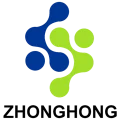
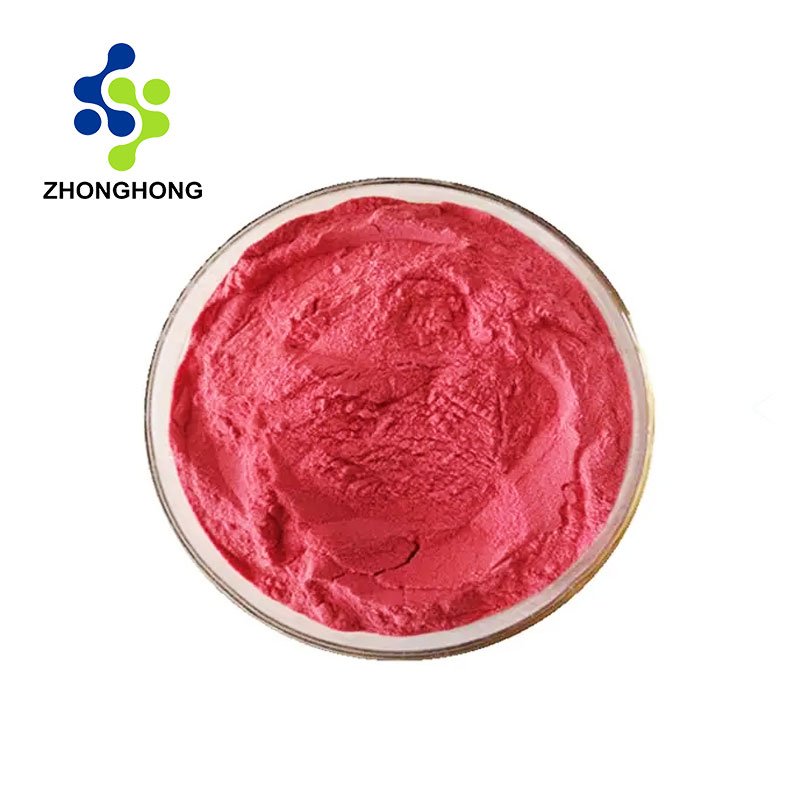
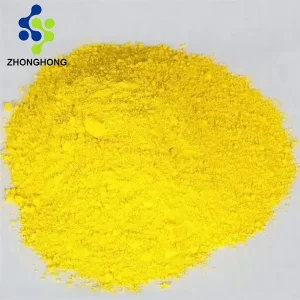

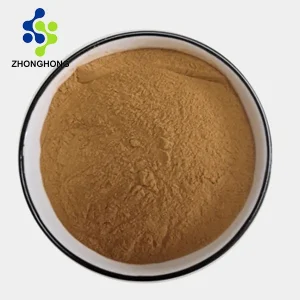
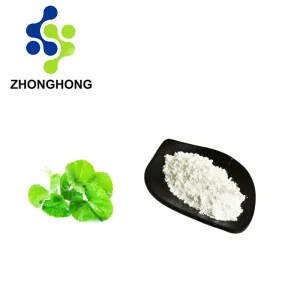
评价
目前还没有评价